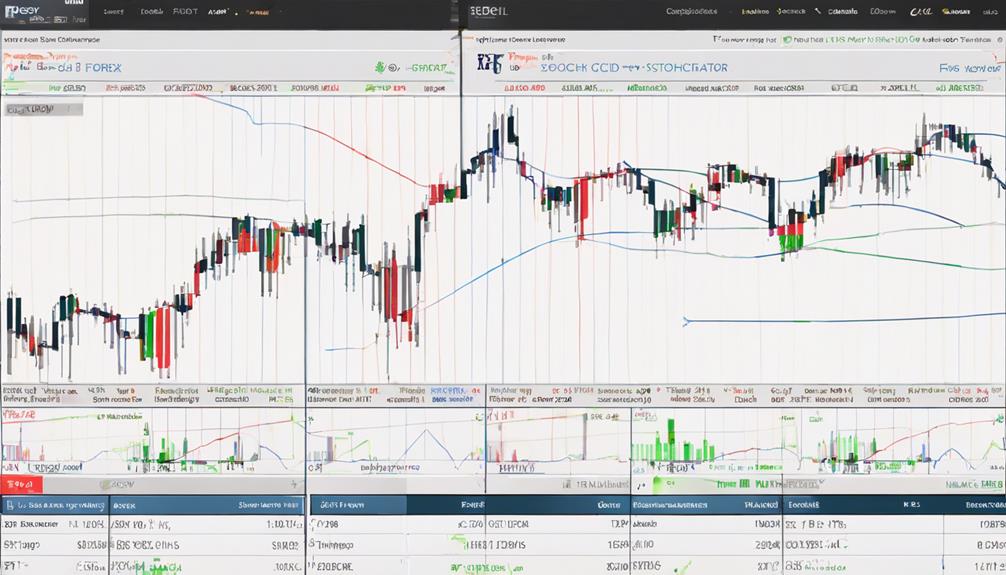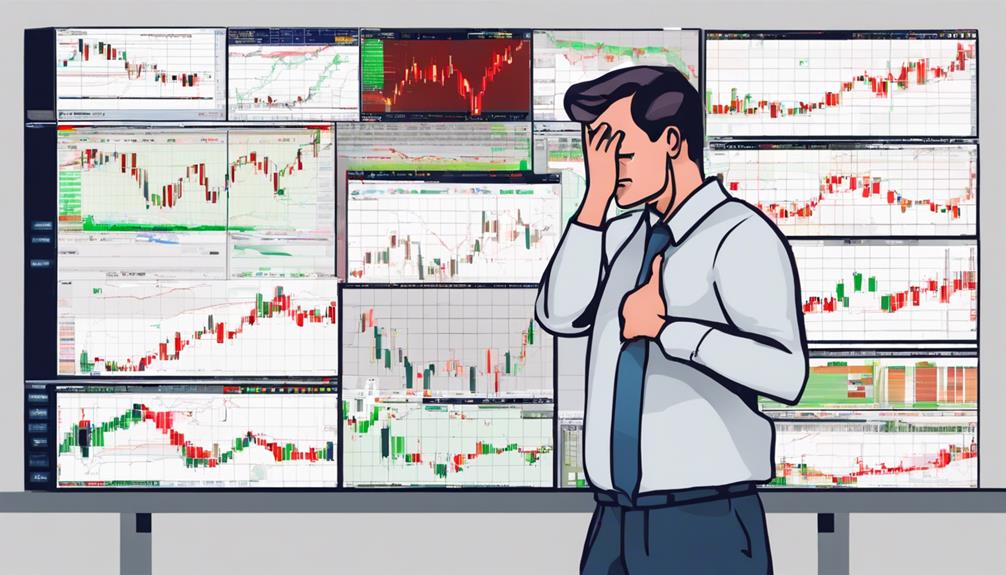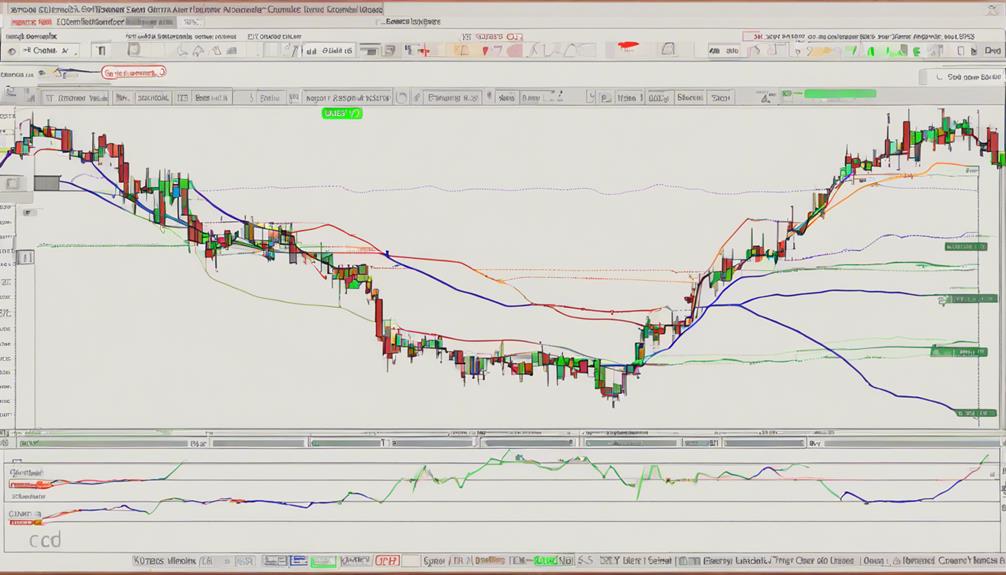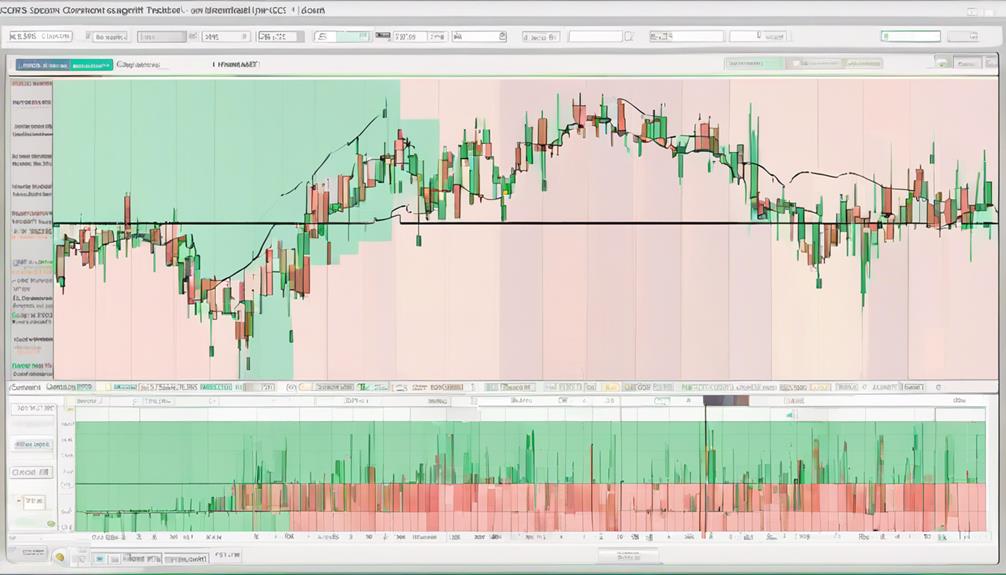The CCI indicator, a stalwart in the realm of forex trading, offers traders a unique perspective on market dynamics and potential opportunities. Its ability to pinpoint extreme price levels and gauge the strength of trends makes it a valuable tool in the arsenal of seasoned traders.
However, its application goes beyond mere technical analysis; the CCI's role in shaping trading strategies and risk management is a topic that warrants a closer look. Understanding how this indicator aligns with broader market movements and influences decision-making is key to harnessing its full potential in the fast-paced world of forex trading.
Origins and Calculation of CCI
The origins and calculation of the Commodity Channel Index (CCI) indicator, developed by Donald Lambert in 1980 for various markets, including Forex trading, play a crucial role in analyzing price movements.
The CCI measures the difference between the current price and a Simple Moving Average (SMA) of the Typical Price, which is the average of high, low, and close prices. The Mean Deviation is used to normalize the data. This calculation results in a momentum-based oscillator that fluctuates around a zero line.
Traders utilize the CCI to identify potential overbought or oversold conditions in the market. When the CCI surpasses +100, it suggests overbought conditions, while falling below -100 indicates oversold conditions.
In Forex trading, the CCI helps traders spot trends, assess the strength of price movements, and anticipate possible reversals. Understanding the origins and calculation of the CCI is fundamental for traders looking to make informed decisions based on price action analysis.
CCI Indicator Vs. Stochastic Oscillator

In comparing the CCI Indicator and the Stochastic Oscillator, traders in forex markets often leverage these momentum-based oscillators for distinct analytical purposes.
- Measurement Range: CCI is unbounded, allowing it to theoretically have unlimited values, while the Stochastic Oscillator is limited between 0 and 100.
- Price Analysis: CCI measures price deviation from a moving average, providing insights into overbought or oversold conditions. On the other hand, the Stochastic Oscillator compares the closing price to a price range, emphasizing momentum and the speed of price changes.
- Focus of Analysis: Traders typically use CCI to identify extreme price levels and potential reversals, whereas the Stochastic Oscillator is more focused on determining the strength of a trend and potential trend reversals.
- Usage in Trading: Combining both CCI and Stochastic Oscillator can offer a comprehensive view, helping traders confirm trade signals and develop more robust trading strategies in the dynamic forex markets.
Limitations of CCI in Trading

Despite its utility in identifying extreme price levels and potential reversals, the CCI indicator comes with inherent limitations when utilized in trading strategies. One significant drawback is its lagging nature, leading to delayed or untimely signals. This delay can result in missed opportunities or entering trades too late.
Additionally, CCI may provide false signals in choppy or sideways markets, where there is no clear trend direction, leading to whipsaws and frequent reversals that could generate losses for traders relying solely on this indicator. Traders should be cautious as past CCI levels do not guarantee accurate future price movements.
To mitigate these limitations, traders often combine CCI with other indicators to confirm signals and filter out false readings. By incorporating additional tools and considering market conditions, traders can enhance the effectiveness of the CCI indicator in their trading strategies.
How Traders Utilize CCI for Trends

Utilizing the CCI indicator effectively can provide traders with valuable insights into trend dynamics in the forex market. When traders use CCI for trends, they employ various strategies to interpret market movements accurately:
- Identifying Overbought and Oversold Conditions: Traders monitor CCI values above +100 for overbought conditions and below -100 for oversold conditions, indicating potential trend reversals.
- Spotting Divergences: Divergence signals on the CCI chart can hint at upcoming trend changes in forex pairs, guiding traders on possible entry or exit points.
- Utilizing Zero Line Crossovers: When the CCI line crosses above the zero line, it signals a potential uptrend, while a crossover below zero suggests a possible downtrend, aiding traders in trend identification.
- Analyzing Price Action Patterns: Combining CCI with price action patterns enhances trend analysis accuracy, as patterns on the price chart often confirm or complement signals from the CCI indicator.
CCI Trading Strategies

Building upon the insights gained from utilizing the CCI indicator for trend analysis, traders can now explore effective CCI trading strategies to enhance their decision-making process in the forex market.
CCI trading strategies often incorporate overbought/oversold signals and convergence/divergence indicators to identify potential entry and exit points. For instance, a short-term strategy involves combining CCI with a moving average to spot trading opportunities swiftly.
More advanced traders may integrate CCI with indicators like MACD and Parabolic SAR for more comprehensive signals, increasing the accuracy of their trades. The CCI not only signals strength or weakness in trends but also confirms a bullish trend when it rises above +100.
Furthermore, traders can enhance the profitability of CCI trading strategies by utilizing multiple time frames and incorporating various criteria to filter out false signals and optimize their trading decisions effectively. By combining these elements, traders can develop a robust trading plan leveraging the versatility of the CCI indicator.
How Does the CCI Indicator Play a Role in Forex Trading According to the Comprehensive Guide?
The comprehensive CCI indicator guide provides valuable insights for forex traders. It explains how the CCI indicator can be used to identify overbought and oversold conditions in the market, as well as potential trend reversals. By following the guide, traders can effectively incorporate the CCI indicator into their trading strategies.
Frequently Asked Questions
How to Use CCI Indicator in Forex Trading?
In forex trading, utilizing the CCI indicator involves monitoring overbought and oversold levels for potential trend shifts. Combining CCI with other indicators can amplify its effectiveness. Divergence between CCI and price movements can indicate trading opportunities.
What Does CCI Indicator Tell You?
The CCI indicator informs traders about potential overbought or oversold market conditions, signaling buy opportunities above +100 and sell opportunities below -100. It also helps identify trend reversals and entry/exit points, enhancing decision-making in forex trading.
Why CCI Is the Best Indicator?
The Commodity Channel Index (CCI) stands out as a premier indicator due to its efficacy in identifying market overbought and oversold conditions, providing clear signals for potential reversals and trend strength, making it a favored tool among traders.
Is CCI a Leading or Lagging Indicator?
CCI is a leading indicator in forex trading, offering early signals of potential trend shifts. Traders can leverage CCI's predictive nature to anticipate price movements, enhancing decision-making. Understanding CCI's role as a leading indicator is crucial for strategic trading.
Conclusion
In conclusion, the Commodity Channel Index (CCI) serves as a valuable tool for forex traders, aiding in the identification of market conditions and trends.
Despite its limitations, the CCI indicator provides insightful data for making strategic trading decisions.
Traders can utilize CCI in various ways to enhance their trading strategies and capitalize on market opportunities effectively.
